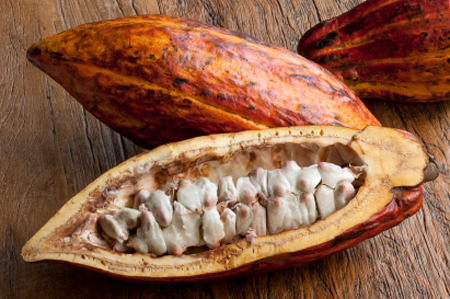Ivory Coast Cocoa Quality Suffers as Merchants Blend Beans
Category: Cocoa
 (Reuters) – Cocoa exporters and grinders in top producer Ivory Coast are rejecting large volumes of beans because of poor quality as farmers seek to blend leftover main-crop cocoa into new mid-crop arrivals, exporters and merchants said on Thursday.
(Reuters) – Cocoa exporters and grinders in top producer Ivory Coast are rejecting large volumes of beans because of poor quality as farmers seek to blend leftover main-crop cocoa into new mid-crop arrivals, exporters and merchants said on Thursday.
A wave of defaults by exporters and higher than expected production left a glut of beans rotting in trucks at ports and in warehouses this year as farmers struggled to find buyers for what is the country’s leading export product.
Ivory Coast’s marketing board, the Coffee and Cocoa Council (CCC), lowered the price it guarantees for farmers by more than a third to 700 CFA francs ($1.13) per kg at the start of the April to September mid-crop in an attempt to stimulate purchasing.
But exporters and up-country buyers said that, even with the lower price, small bean size and high levels of free fatty acids (FFA) had left much of current supplies unusable.
“We can’t buy these beans and certainly can’t export them,” one Abidjan-based exporter said.
Bean size is determined by what is known as the bean count, which is the number of beans per 100 grams of cocoa. Lower bean counts denote larger bean size.
The maximum authorised bean count set by the CCC for export during the October to March main crop was 105 but was raised to 120 for the mid-crop, which typically produces smaller beans mainly destined for local grinders.
Five exporters and seven merchants told Reuters they were seeing bean counts ranging from 110 to as high as 145, well above the CCC threshold.
The exporters said they expect the CCC to further increase the bean count ceiling to allow more beans to be exported, though they said there is little to be done about the high FFA levels, which erode the quality of cocoa butter.
The European Union has set a ceiling for FFAs in cocoa beans of 1.75 percent oleic acid equivalent. Grinders in Abidjan and San Pedro, however, reported FFA levels of about 5 percent.
Exporters blamed quality issues on main-crop beans that languished in poor storage conditions and which merchants are now trying to get rid of by mixing them into mid-crop supplies before delivering them to exporters.
“We know they’re doing this,” said the director of a San Pedro-based export firm. “It will take at most two months to get rid of the bad quality beans and get back to normal standards.

